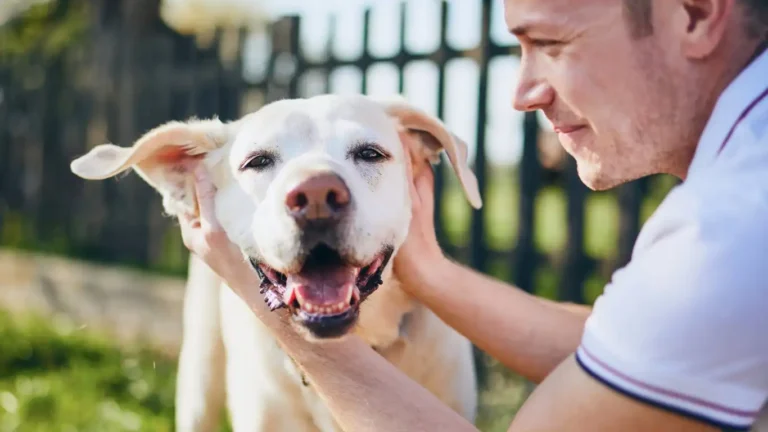Best Oils to Add to Dog Food for a Healthy Coat That Shines
As someone who’s spent a good chunk of my career up to my elbows in fur and food bowls as an Animal Care Specialist, I’ve had my fair share of chats with concerned pet parents about dry skin, dull coats, and those dreaded seasonal shed explosions. One question that comes up more often than you’d think is: what are the best oils to add to dog food for a healthy coat? Trust me, there’s more to it than tossing in a splash of whatever’s in your kitchen. A dog’s skin and coat reflect what’s going on inside—and just like us, they need the right balance of nutrients and healthy fats to look and feel their best.
Why Your Dog’s Coat Health Starts With Nutrition

I’ve seen dogs come into the clinic with flaky skin or brittle coats, only to perk up in just a few weeks after making small tweaks to their diet. It’s not magic—it’s science and care. Your dog’s coat is actually a pretty great indicator of their overall health. If it’s looking rough, greasy, or sparse, there’s usually an internal imbalance going on. That’s where oils come in—they’re like a natural conditioner from the inside out.
The right oils offer omega-3 and omega-6 fatty acids, which support everything from brain development to inflammation reduction and, yes, a lustrous, silky coat. But not all oils are created equal, and not all dogs need the same types. Breed, age, allergies, and existing health conditions all play a role in choosing the best fit.
Top Oils for Dogs That Promote a Healthy Coat

1. Fish Oil
This one’s a classic for a reason. High in EPA and DHA, fish oil is one of the most commonly recommended supplements by vets and pet nutritionists alike. It’s especially great for dogs with itchy skin or allergies. Back in the shelter, we had this older Lab mix named Boomer who was constantly scratching—after just three weeks on a salmon oil supplement, the difference in his coat and comfort was night and day.
- Pros: Supports heart, brain, joint, and skin health.
- Best for: Dogs with allergies, inflammation, or dry skin.
- Tip: Choose wild-caught, sustainably sourced fish oil when possible.
2. Coconut Oil
This one’s been trending, and for good reason. Coconut oil is rich in medium-chain triglycerides (MCTs), which can help improve digestion, energy, and—you guessed it—skin and coat. I personally use a spoonful in my own pup’s meals a few times a week. It makes his coat glossy and smells a lot better than fish oil (bonus!).
- Pros: Antibacterial, antifungal, great for skin issues.
- Best for: Dogs with dull coats or flaky skin, or if you want a natural energy boost.
- Watch out: Some dogs may have sensitivities, so start small and monitor digestion.
3. Flaxseed Oil
Here’s a plant-based option for anyone wanting to avoid animal products. Flaxseed oil is a great source of ALA (alpha-linolenic acid), a type of omega-3 that can support skin and coat health. I’ve used it on more than one senior dog who needed a gentle, non-fishy option.
- Pros: Anti-inflammatory, supports coat shine and skin health.
- Best for: Dogs with mild skin issues or as a vegan alternative.
- Note: It’s less potent than fish oil, so the effects may be subtler.
What to Know Before Adding Oils to Your Dog’s Diet

Even though oils can be super beneficial, moderation is key. I’ve seen well-meaning pet parents overdo it, thinking more oil equals more shine. Unfortunately, that can lead to digestive issues—or worse, weight gain. Always introduce new supplements slowly and talk to your vet, especially if your dog is on medication or has chronic health conditions.
- Start with small doses: A teaspoon for small dogs, up to a tablespoon for large breeds.
- Monitor for side effects: Upset stomach, diarrhea, or increased shedding can be signs to adjust the dose.
- Store properly: Many oils are sensitive to heat and light. Keep them in a cool, dark place to prevent spoilage.
Next up, we’ll dive into some of the lesser-known but equally amazing oils that can support your pup’s skin and coat from the inside out. These are the underdogs of the oil world—and I’ve got some great stories to share from the clinic floor.
Surprising Oils That Work Wonders for Your Dog’s Coat

Now, let’s get into some of the lesser-known—but seriously powerful—oils I’ve used and recommended over the years. These aren’t usually the first options people think of when searching for the best oils to add to dog food for a healthy coat, but they’ve got some unique benefits worth exploring. When I worked with more sensitive breeds like Frenchies or those mystery-mix rescues with endless allergies, these alternatives sometimes worked better than the usual suspects.
4. Hemp Seed Oil
If you’ve never considered hemp seed oil, you might be missing out on one of the most balanced plant-based oils available. It’s rich in both omega-3 and omega-6 fatty acids—perfectly balanced at a ratio dogs can actually absorb well. One of the dogs we had at the shelter, a wiry terrier mix named Hazel, had this chronically itchy, red skin. Coconut oil didn’t cut it for her, but hemp oil? Total game-changer.
- Pros: Naturally anti-inflammatory, supports immune function, and helps skin retain moisture.
- Best for: Dogs with dry or irritated skin, autoimmune sensitivities, or older pups with skin thinning.
- Extra tip: Make sure you’re using cold-pressed hemp seed oil—avoid anything labeled for recreational use (CBD oil is a different ball game).
5. Olive Oil
Yep, good ol’ olive oil. This one’s a pantry staple in most homes, and it’s perfectly safe for dogs in moderation. Rich in antioxidants and vitamin E, olive oil can be a simple, affordable way to support your dog’s coat health—especially if you’re in a pinch and need something fast. I’ve used it myself on foster dogs when we were low on our usual stash, and it absolutely helped restore their shine over time.
- Pros: Packed with antioxidants, supports skin hydration and cellular repair.
- Best for: Dogs who need a budget-friendly, accessible supplement.
- Use it like this: A teaspoon drizzled over food a few times a week. Watch calories for small dogs!
6. Pumpkin Seed Oil
This one flies under the radar, but it’s one of my favorites for dual benefits. Not only does pumpkin seed oil support skin and coat, but it also helps with digestion and can even naturally repel parasites like tapeworms. We had a German Shepherd named Koda with flaky skin and chronic worm issues. After introducing pumpkin seed oil, we noticed improvements in both areas. Win-win.
- Pros: High in zinc and vitamin E, supports coat gloss and internal health.
- Best for: Dogs with flaky skin or gut health issues.
- Fun fact: It has a naturally nutty flavor most dogs love.
How to Choose the Right Oil for *Your* Dog

Picking the right oil isn’t about jumping on the most expensive or most popular trend. It’s about tuning into your dog’s individual needs. Think of it like this: just like some people thrive on avocados and others can’t handle the fats, dogs react differently to oils too. Their breed, age, activity level, and sensitivities all play a part.
Here’s a quick checklist I often share with pet parents at the clinic to narrow it down:
- Start with symptoms: Is your dog’s coat dull? Flaky? Greasy? Oily? Itching nonstop?
- Consider existing health issues: Diabetic dogs, seniors, or pups with allergies might benefit from different oils.
- Talk to your vet: I can’t stress this enough. Some oils interact with medications or conditions like pancreatitis.
- Rotate if needed: Sometimes I recommend cycling oils every few months to keep things balanced and avoid sensitivities.
Common Mistakes to Avoid With Oil Supplements

Now that we’ve talked about what to do, let’s touch on what not to do. Believe me, I’ve seen it all—from dogs getting the runs because of too much oil to clients unknowingly giving spoiled oil that did more harm than good. Here are some things to keep in mind as you start adding oils to your dog’s bowl:
- Don’t go overboard: More oil doesn’t mean more benefits. In fact, it can upset your dog’s stomach and add unnecessary calories.
- Store oils properly: Heat and light can destroy nutrients and turn oils rancid. I always recommend refrigerating after opening, especially fish or flaxseed oils.
- Check for added ingredients: Some oils marketed for humans contain garlic, xylitol, or flavorings that are toxic to dogs. Always read the label.
- Watch for allergic reactions: If your dog starts scratching more or acting off after introducing a new oil, stop and consult your vet.
Adding oil to your dog’s diet can feel like a small step, but it often makes a big difference. I’ve seen coats go from dry and dull to soft and shiny just by making this one adjustment. The key is choosing the right oil, in the right amount, for the right pup. Simple, thoughtful changes can go a long way in supporting their overall well-being—and you’ll notice the difference every time you run your hand down their back.
Tips for Adding Oils to Your Dog’s Routine the Right Way

So now that you’ve got a solid handle on the best oils to add to dog food for a healthy coat, let’s talk about how to actually make it part of your dog’s regular routine. Because here’s the thing—just like with humans, consistency is key. But also? Dogs are individuals. What works wonders for one might need tweaking for another. I’ve learned this firsthand from working with all kinds of pups—from picky poodles to giant breeds with stomachs as sensitive as their feelings.
Here’s how I usually guide pet parents through the process of introducing oils:
- Start small. I know, I keep saying this, but it really matters. Begin with 1/4 of the recommended serving, especially for smaller dogs, and build up slowly.
- Mix it in well. Some dogs will turn their nose up at anything new. Mixing the oil with wet food or warming it slightly can help blend the smell and taste.
- Stick to a schedule. Add the oil at the same meal each day. Dogs thrive on routine, and this makes it easier to track any changes or reactions.
I used to keep a little notebook for my fosters where I’d jot down what oil we introduced and how the dog responded. It might sound like overkill, but it helped us pinpoint what worked, especially when managing food sensitivities or transitioning between different fosters.
Other Ways to Support Coat Health Alongside Oils

Adding oils is just one piece of the coat-care puzzle. I always remind people that skin and coat issues usually have more than one cause. Diet is huge, yes—but grooming habits, environment, stress, and underlying health conditions all play a role. Think of oils as part of a full-body wellness approach, not a miracle fix in a bottle.
Grooming Matters
Brushing your dog regularly helps distribute those natural oils and keeps tangles or mats from forming, especially in long-haired breeds. A slicker brush once a day for my double-coated husky mix made a world of difference, especially during shedding season.
Hydration Is Key
We often forget, but water intake affects skin elasticity and coat shine just as much as oils do. If your pup isn’t drinking enough, try adding a little bone broth or even water-rich foods like cucumbers or watermelon chunks (in moderation, of course!).
Watch for Environmental Triggers
Dry air, allergens, or even harsh shampoos can trigger skin issues that no amount of oil can fix alone. I had a foster shepherd once who reacted terribly to scented laundry detergent used on his bedding—poor guy was itchy for weeks. Once we switched to unscented, his skin started calming down, and the oils worked better too.
Final Thoughts From the Clinic Floor
Over the years, I’ve seen what happens when you approach your dog’s care with intention and patience. Adding healthy oils isn’t just about making their coat shinier for Instagram photos (though hey, that’s a bonus!). It’s about improving their quality of life—making them more comfortable, less itchy, and healthier from the inside out.
Whether it’s trusty fish oil, a splash of coconut, or an under-the-radar gem like pumpkin seed oil, the right fat source can do wonders. And the best part? Your dog will thank you—maybe not with words, but with tail wags, fewer hot spots, and that glossy shine that turns heads at the dog park.
References
- American Gastroenterological Association
- American Veterinary Medical Association
- American Society for Nutrition
- National Center for Biotechnology Information
- ASPCA
Disclaimer
This article is based on my personal experience as an Animal Care Specialist and the latest veterinary guidance available at the time of writing. However, it is not a substitute for professional veterinary advice. Always consult your vet before introducing any new supplements to your dog’s diet—especially if they have existing health conditions or are on medication.






